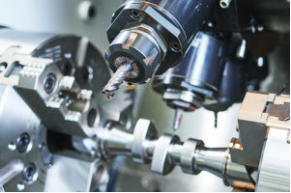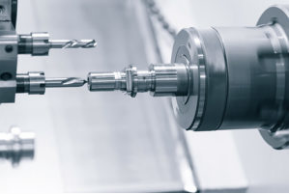Hotest Articles

It is not difficult to sing the praises of 3D printing: the quickly evolving technology is disrupting manufacturing workflows in many industries, from aerospace to healthcare, to architecture and design. In addition to these highly publicized application areas, there are a number of sectors that have the potential to be completely transformed by additive manufacturing which have not received the attention they should. Chief among them is the consumer electronics industry.
3D printed electronics is still an admittedly niche segment of the broad additive industry, though it is arguably one of the most promising avenues for it. Today, only a handful of companies are actively offering electronics 3D printing—such as Nano Dimension and Optomec—and much of the work is being done at an advanced research level.
How Electronics 3D Printing Works
The basic premise of 3D printed electronics is that multi-material printing systems deposit or extrude both conductive and insulating materials. In the case of Nano Dimension, for instance, the Israeli company has developed an inkjet system that deposits conductive and insulating inks to produce complex printed circuit boards (PCBs). Optomec, for its part, uses a technique called Aerosol Jet Technology which prints conformal interconnects on 3D surfaces.
Other research initiatives are exploring the potential of creating conductive 3D printing materials for existing additive platforms, including FDM and multi-material technologies.
Current Advantages
Though it is still a brand new field, electronics 3D printing is already making an impact and is well on its way to transforming how electronics are developed and prototyped. The U.S. military and various global technology companies are already exploiting some of the benefits of electronics 3D printing technologies, including in-house production and more design freedom.
• In-house prototyping
One of the biggest advantages of electronics 3D printing today is that companies can prototype PCBs and other electronic devices rapidly in house, reducing the need for external PCB production services, which can add weeks or even months to product development. As a direct consequence of this, consumer electronics manufacturers can design and prototype new products with much faster turnaround times and with significantly reduced costs. Overall, having electronics 3D printing in house enables businesses to speed up R&D significantly.
• More Design Freedom
One of the key advantages of 3D printing extends to the electronics field: design freedom. In the consumer electronics market especially, where increasingly small devices are in demand, the ability to produce complex and compact electronic circuit boards is becoming more and more important.
Looking Ahead
Though the current advantages for electronics 3D printing are worth highlighting, the future potential of the nascent field is really what is exciting. That is, while electronics 3D printing is largely limited to prototyping applications at the moment, as the additive platforms become more sophisticated and scalable, the technology will begin to transition into production.
• Customization
As 3D printing for electronics becomes more mainstream, the consumer electronics market will evolve rapidly, and we are likely to see an emergence of next-gen 3D printed electronic devices. Customized electronics will also become a huge opportunity area, as manufacturers will have the ability to produce one-off or small-batch electronic components, such as PCBS or sensors that can be fitted into all kinds of devices.
• New Applications
Consequently, new applications will be unlocked, such as smart electronic wearables and next-gen medical devices. Already, we are seeing designers and researchers utilize 3D printing to create wearable 3D printed casings for traditionally manufactured electronics, but the ability to print electronic sensors and components directly can result in electronics being printed onto flexible substrates or wearable materials.
Researchers from the Wyss Institute, for example, are working with the U.S. Air Force Research Lab to develop soft 3D printed electronics which could be worn directly on the skin. Technologies such as this could lead to more sophisticated methods of tracking and monitoring the body for athletic and medical purposes.
The ability to manufacture bespoke electronic circuit boards could also add new functionalities to existing consumer electronics, such as smartphones, vehicles and more. For instance, smartphone designs could be reimagined or existing phones could integrate more functions as smaller, finely shaped PCBs and sensors could be integrated.
• Fully 3D printed electronic devices
Looking way ahead, it is also possible to envision a future in which consumer electronic products are entirely 3D printed: including the casing and electronic components. This will require an advanced multi-material printing technology that is capable of depositing plastic material for the enclosures as well as conductive and insulating materials for the embedded PCBs.
Recently, researchers from the University of California San Diego made headway on a project in which they are using Stratasys’ Objet350 Connex 3 multi-material 3D printing to produce a soft robotic form with electronic properties. These researchers relied on existing materials (one carbon-reinforced material has weak conductive properties), but they have shown that if more conductive materials come to market, it could be possible to print embedded sensors and electronics into 3D printed objects.
An eye on 3D printed electronics
At GUAN SHENG , we know it is important to now only follow current trends in manufacturing but to keep an eye on the future—to know what emerging technologies have the potential to shape and even revolutionize existing production methods. Electronics 3D printing is one such technology—and we are eager to see how it continues to advance.






